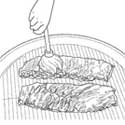
These eight skills are essential for great barbecue, whether you're an amateur or professional.
1. Mopping
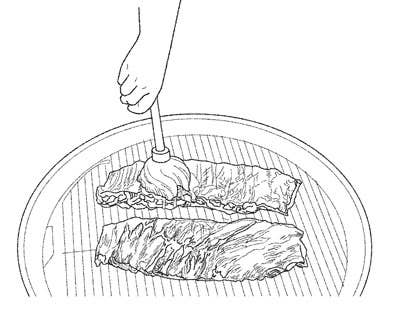
Illustration: Brenda Weaver
Mopping is a technique that involves slathering sauce onto the cooking meat with a large basting brush, which adds flavor, makes skin crisp, and, when layered over the rub, creates a nice bar—the flavorsome crust that develops during the cooking process. According to Amy Mills Tunnicliffe, co-author of Peace, Love & Barbecue (Rodale, 2005), "Mopping adds surface flavor, it's not penetrating. But when you pull pork butt, you're mixing the bark with the internal meat, which is fabulous."
2. Crisping Chicken Skin
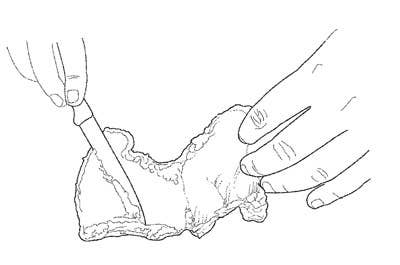
Illustration: Brenda Weaver
We learned this method of removing fat from chicken skin in order to produce a remarkably crisp result from competition barbecue champion George "Tuffy" Stone. "Peel the skin carefully from the thigh or breast, and use a knife to scrape most of the fat off the underside until the skin becomes somewhat translucent," instructs Stone. "Then drape the skin back over the thigh or breast, and tuck it under the meat. When it cooks, the skin will become crisp."
3. Spraying With Apple Juice
Tunnicliffe sometimes sprays meat with apple juice every hour or so while it cooks, to keep the surface moist and to add additional flavor. "Meat sweats when it cooks; it opens up and absorbs whatever's on top of it," she says. "That's a good time to spray."
4. The Texas Crutch
This is the term for wrapping meat in foil for its final hours of cooking, which keeps the meat moist and prevents it from absorbing excess smoke (some people add apple juice and honey inside the wrapper for extra moisture and flavor). "Wrap the meat when it has a nice color, and throw it back onto the pit," says Stone. "You can even finish cooking it in your oven."
5. Adam Perry Lang's Microplane
Adam Perry Lang, the owner of Daisy May's BBQ USA in New York City, uses a Microplane grater to add a hint of fresh flavor as a finishing touch on his meats. "I grate items like garlic, onion, and green apple into a sauce or dressing that goes on the meat when it's ready to serve," says Lang. "Say I have a pork shoulder. I create a mountain of these flavors on top, and as I pull the meat, this stuff gets incorporated into it."
6. Beer-Can Chicken
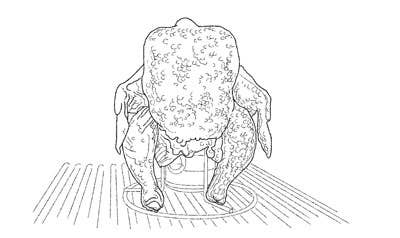
Illustration: Brenda Weaver
This technique for making succulent chicken entails stuffing the cavity of an upright bird with an open, half-full can of beer. The liquid evaporates during cooking, basting the flesh from the inside out. According to Elizabeth Karmel, executive chef at Hill Country Barbecue in New York City, "It infuses the meat with beer, which gives it a great depth of flavor, and roasting the chicken vertically allows the fat to render out in a consistent way, which gives a uniformly crispy skin."
7. The Rub
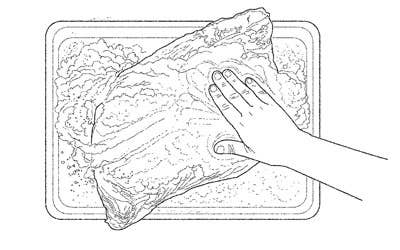
Illustration: Brenda Weaver
A rub is essentially a dry marinade: a blend of spices, salt, and sugar that's dusted onto meat, imparting surface flavor and an appealing crust, if cooked properly. Rubs work well with lean cuts that benefit from added flavor. "Once the meat starts to cook, the moisture blends with the rub and starts to marinate your meat immediately," says Tunnicliffe. "That rub, plus your wood, really determines the flavor of what you're cooking."
8. Brining/Injecting/Marinating
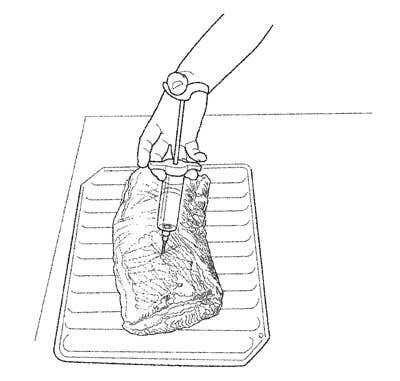
Illustration: Brenda Weaver
There are a few strategies for keeping meats, especially lean ones like chicken and pork tenderloin, moist when barbecuing. Marinating involves soaking meat in something acidic (fruit juice, citrus, buttermilk). The acid breaks down the muscle tissue of the meat and thus allows some moisture (and flavor) to penetrate. Brining—immersing meat in a salty solution—goes one step further: The salt actually alters the structure of the proteins in the meat so that they trap moisture inside. Or you can deliver moisture directly to the interior of the meat by injecting—plunging in a syringe filled with brine or other flavorful liquid. "You inject cuts—like a whole hog or a pork shoulder—that are too large to submerge," says Steven Raichlen, author of The Barbecue Bible(Workman Publishing, 1998).
Keep Reading
Continue to Next Story










